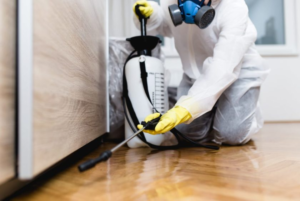Your siding protects your home from harsh weather, but over time it can be damaged or worn down. It is important to repair or replace damaged siding as soon as possible.

Small cracks, holes and fading can usually be repaired without needing full replacement. However, extensive damage to your siding could lead to moisture in your walls causing rot and mold, so full replacement may be necessary. Contact Siding Repair Charleston SC for professional help.
Loose siding panels not only compromise the visual appeal of your home, but they can also create gaps that allow rainwater and pests to enter. This can lead to further damage and even structural instability. It’s important to inspect your siding regularly, particularly after storms and strong winds. If you spot any signs of looseness, reattaching them promptly is essential to prevent further problems.
Begin by cleaning the affected area with water and a mild detergent. This is vital because dirt can interfere with the adhesive properties of any siding repair materials you use later. Then, gently pull up on the loose panel to determine its extent of disconnection. If it comes off completely, you’ll need to replace it. If the loose section is merely warped or buckling, you may be able to simply reinforce it. Examine the area behind the loose section for any signs of moisture, including mold and mildew. These are often telltale signs that there is damp rot underneath the vinyl, which needs immediate attention.
If you’re unable to reattach the loose section, you should replace it with a piece that matches in color and style. This can be a challenge, since many manufacturers discontinue specific siding lines, so it’s best to consult a professional siding installer for help.
Once the new piece is in place, reattach the loose edge by snapping it into place against the locking ridge. You can add a bead of caulk to help the connection adhere. Be sure to choose a weather-resistant caulk that is compatible with your siding material.
When you’re finished, perform a thorough inspection of the repaired or replaced area to ensure that it is aligned properly and securely attached to the underlying structure. You should also look for any gaps or cracks, which you can seal with caulk that is compatible with your siding type. Be sure to smooth the caulk for a clean, seamless finish. Finally, be sure to trim trees and shrubs away from your home to prevent branches from causing further damage or abrasions. Regular inspections and prompt action can help you avoid costly siding repairs in the future.
Cracks and Holes
Holes and cracks in vinyl siding expose your home to moisture damage, rot, mildew and pest infestation. These problems can be costly to fix and may require professional help. It’s important to keep up with routine maintenance and inspections to identify damage before it worsens. Taking simple steps such as cleaning with a cloth or soft-bristle brush, using a mild soap solution (not power washing), trimming trees and shrubs to avoid scratches, and addressing any potential problems promptly can prolong the life of your vinyl siding.
Small holes, under an inch in size, can often be repaired with a vinyl siding repair kit. The kits contain color-matched vinyl discs or plugs that can be inserted into the hole and secured with caulk. To prepare for the repairs, first clean the area around the hole. Remove any loose or damaged areas of vinyl, and smooth any rough edges with sandpaper to ensure the caulk adheres properly. Once the holes are cleaned, you can apply a bead of caulk and let it dry. Once the caulk has dried, sand it and paint it to match the surrounding vinyl to hide the patch.
For larger holes or cracks, patching the vinyl is the best approach. This method erases any visible flaws, restoring your home’s appearance and protecting it from moisture, bugs, mildew and mold.
Before attempting any vinyl siding repair, it’s important to have the proper tools and skills. For smaller holes and cracks, a caulking gun can make the process much easier and faster. Having the right tools and knowing how to use them can save you money in the long run, as you won’t have to pay for expensive replacements.
If you’re unsure of your ability to perform a DIY vinyl siding repair, it’s always best to hire a contractor. Professionals have the specialized tools, knowledge and experience to repair larger holes, cracks and dents in your vinyl siding, making them look new again. This can be a cost-effective and convenient option, especially if the damage is extensive and would otherwise require a full replacement of your siding.
Water Damage
Even the sturdiest siding is vulnerable to moisture damage that silently erodes its protective layer and leads to structural damage. The first signs of this type of damage include warped or buckling panels, discoloration, and mold or mildew growth. This is one of the most serious siding problems homeowners face, and the best way to prevent it is to hire a professional contractor to install siding that’s water-resistant, such as James Hardie fiber cement siding.
You can help prevent moisture damage to your siding by performing regular inspections, especially after severe weather. Checking for signs of a leak, like soft spots in the walls or windowsills, is another good measure. Keeping gutters and downspouts clear of debris, preventing overhanging trees or shrubs from trapping moisture against your home’s foundation, and ensuring adequate ventilation in your home’s attic and soffit vents are other important measures to take.
When you do spot water damage, it’s a good idea to get the problem fixed right away. Left untreated, moisture can lead to mold, mildew, and fungus, as well as wood rot and other structural damage. Water-damaged siding also entices unwanted pests, such as termites and carpenter ants, which can cause costly and destructive damage to your home’s structure and foundation.
If you notice any of these signs, you should remove the affected siding panels and inspect the underlying sheathing for signs of moisture damage. If there’s any rot or mold, you may need to replace the sheathing, or repair and seal it before installing new siding. It’s a smart idea to also have a professional contractor install a house wrap or vapor barrier, as well as insulation, to protect the sheathing and sheathing-and-truss system of your home from moisture intrusion in the future.
When it comes to repairing or replacing your siding, you can’t afford to cut corners. A shoddy job can cost you more in the long run, so it’s worth it to choose a reliable contractor with a track record of success. The right siding contractor will provide a high-quality installation and ensure your siding is protected from moisture infiltration for years to come.
Energy Costs
Whether you want to enhance your home’s aesthetic or boost its market value when it comes time to sell, siding repair can be a smart choice. Aside from improving your property’s curb appeal, regularly repairing siding also helps reduce energy costs by eliminating air leaks and blocking drafts. This, in turn, reduces your heating and cooling bills.
Although it’s possible to do minor repairs yourself, extensive damage or a lack of confidence in your DIY skills may require the expertise of a professional contractor. This can cost more upfront, but it also ensures quality work and protects you from liability for mistakes or damage caused by amateur work.
Another factor that influences the cost of siding repair is the type of material you choose. Durable materials like vinyl and fiber cement typically cost more upfront than wood or shingle, but they also require less maintenance and repair over the years. In addition, higher-quality materials often last longer and are more resilient to weather conditions, which can offset the initial cost in the long run.
Choosing the right contractor for your siding repairs is also crucial. Licensed and insured professionals have the tools, experience, and equipment necessary to get the job done quickly, efficiently, and correctly. A professional will also be able to assess the extent of the damage and provide an accurate quote. Getting multiple quotes from different contractors is a good way to ensure fair pricing and exceptional workmanship.
Siding repair is a smart investment that safeguards your home from damage and prolongs its lifespan. By addressing small problems early on, you can avoid the hassle and expense of more extensive and costly repairs in the future.
When it comes to determining whether or not to invest in siding repair or replacement, there are many factors that influence your decision. Partial repairs might make sense when deterioration is limited to specific sections and existing cladding remains structurally sound. On the other hand, a full replacement can increase your property’s market value and improve its energy efficiency. Ultimately, the decision comes down to what’s best for your long-term financial health.








